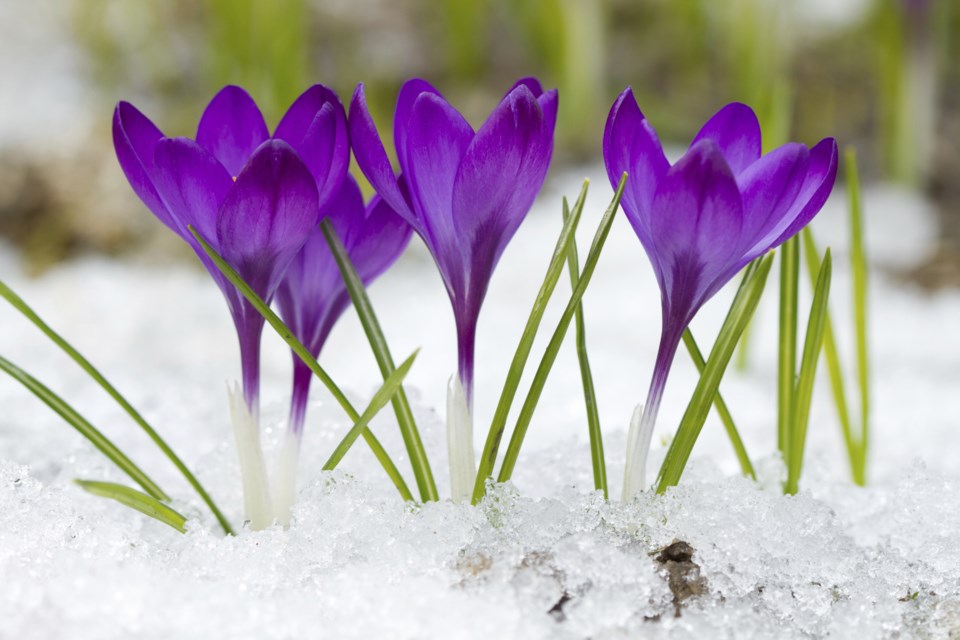If you are worried about how this week’s cold snap might be affecting your garden, you’re not alone.
Cael Wishart is the head gardener at the University of Guelph’s Arboretum. He says this recent cold snap is more worrisome than others because it comes after an unusually warm and dry spring, with almost summer-like temperatures that happened at the end of March, he says.
Some plants, says Wishart, “interpret this that winter’s over and start leafing out.”
When the weather is warm and dry, plants and trees that typically bloom in warmer temperatures like bulb plants, forsythias, magnolias, cherries and apple trees, tend to start blossoming and leafing out. This means they are using up their energy early in the season. As well, there is less available moisture in the soil for them to draw from.
For many of these plants, the cold snap won’t kill them, says Wishart, but they will have a shorter blooming period.
For farmers a cold snap can be detrimental to a crop like apples or asparagus.
Tim Barrie, owner of Barrie’s Asparagus in Cambridge says that the cold snap will destroy any of the asparagus above ground. Luckily, asparagus in this part of Ontario blooms a little later than it does down south, he says.
Kevin Martin, owner of Martin’s Family Fruit Farm, says he doesn’t completely relax about frost until June. He is certainly keeping his eye as this latest cold snap continues.
The worst-case scenario is something like the year 2012, he says, when 80 per cent of Ontario’s apple crop was lost to frost.
“March break of that year we had summer temperatures,” says Martin, but “that April was normal with multiple freezes.”
“Once the buds freeze, it’s over. You won’t have an apple until next year.”
The year 2015 was another year with high apple crop loss across Ontario, says Martin. “That whole spring, there were two hours that were below freezing. Two hours, and we lost half the crop.”
Martin says that he has begun installing frost stands or wind machines in his orchards. They protect about 10 to 15 acres at a time by circulating air throughout the orchard and pulling down the warmer air. He says they can make a one or two degree difference — which in an orchard is often all you need for a crop, he says.
As for at-home gardeners, Wishart doesn’t think people need be too worried.
“I don’t think people should be too, too worried that their plants will die from this,” he says.
Wishart says gardeners should focus on native species that have a hardiness suited to their environment. For other plants that might be more sensitive to cold, he recommends wrapping plants in burlap and protecting roots at the base of the plant. This creates a warmer microclimate for the plant, he says.
His advice?
“Wait until after May to do your planting and just enjoy the process of gardening. It’s an ever-changing lifestyle, and it’s such an engaging process. It’s a very rewarding process if you stay on top of it.”
Leah Gerber, Local Journalism Initiative, Waterloo Region Record. The LJI is a federally funded program.



